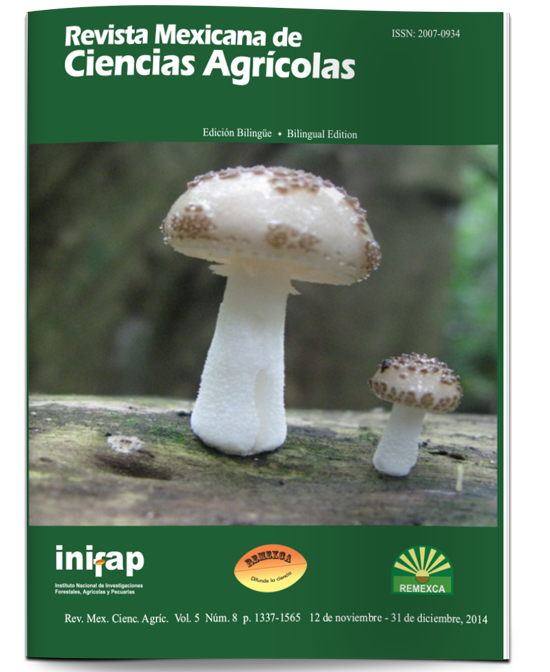MasAgro-maize strategy analysis
DOI:
https://doi.org/10.29312/remexca.v5i8.833Keywords:
biodiversity of native maize, conservation agriculture, monoculture corn, paradigm of traditional agriculture, small production unitsAbstract
This paper discusses the objectives and strategies of the MasAgro-maize program starting from the initial conditions of the traditional agricultural subsector of Mexico that produces maize under rainfed conditions. These initial conditions show that the trend of the past 30 years has been to increase the domestic production of rainfed maize by 1.20 million tons per year (MTY) and the yield in 0.22 Mg ha-1, each 10. Therefore, the MasAgro objectives should be corrected in consequence. Global experience on the adoption of conservation agriculture (CA) by small producers is analyzed. For the CA with biannual rotation adoption case examined, it is estimated that the program has directly or indirectly to treat 3.164 million hectares (M ha) managed by more than 800 000 small production units, (categories<5 ha and 5-20 ha) and achieve average yields of 3.92 Mg ha-1. Despite the recognized positive effect on sustainability, the strategy of irreversible adoption of CA may be poor due to a low short- term economic incentive involved, to the lack of access to credit, marketing support, and several inconsistencies with the objectives and requirements of the small UP wellness. The strategy of replacing 25 to 50% of the area occupied by bothnativemaizeracesandcreolizedvarietiesaredeemed inappropriate for Mexico, by its character as the center of origin of maize and important reservoir of biodiversity of this species.
Downloads
Downloads
Published
How to Cite
Issue
Section
License
The authors who publish in Revista Mexicana de Ciencias Agrícolas accept the following conditions:
In accordance with copyright laws, Revista Mexicana de Ciencias Agrícolas recognizes and respects the authors’ moral right and ownership of property rights which will be transferred to the journal for dissemination in open access. Invariably, all the authors have to sign a letter of transfer of property rights and of originality of the article to Instituto Nacional de Investigaciones Forestales, Agrícolas y Pecuarias (INIFAP) [National Institute of Forestry, Agricultural and Livestock Research]. The author(s) must pay a fee for the reception of articles before proceeding to editorial review.
All the texts published by Revista Mexicana de Ciencias Agrícolas —with no exception— are distributed under a Creative Commons License Attribution-NonCommercial 4.0 International (CC BY-NC 4.0), which allows third parties to use the publication as long as the work’s authorship and its first publication in this journal are mentioned.
The author(s) can enter into independent and additional contractual agreements for the nonexclusive distribution of the version of the article published in Revista Mexicana de Ciencias Agrícolas (for example include it into an institutional repository or publish it in a book) as long as it is clearly and explicitly indicated that the work was published for the first time in Revista Mexicana de Ciencias Agrícolas.
For all the above, the authors shall send the Letter-transfer of Property Rights for the first publication duly filled in and signed by the author(s). This form must be sent as a PDF file to: revista_atm@yahoo.com.mx; cienciasagricola@inifap.gob.mx; remexca2017@gmail.
This work is licensed under a Creative Commons Attribution-Noncommercial 4.0 International license.



